A Souvenir from the Past
In the small Basque fishing village of Pasaia, roughly 5 kilometers from San Sebastián, lies the wooden shell of the San Juan whaling ship.
This ship was one of the very first whaling vessels that traversed the Atlantic from the Basque Country to Newfoundland, until it sank off the coast of Canada in 1565. For over four centuries, it rested in this watery grave until it was discovered in 1978 by a Canadian archaeological team. In spite of its tragic end, this 16th century ship is a living testament to the Basque people’s longtime whaling culture and maritime ascendancy.
Indeed, the Basques’ relationship with the water is a long one. Records from as far back as the year 670 show Basque sailors selling whale oil to a French abbey. And it was a Basque captain – Juan Sebastián Elcano – who first circumnavigated the Earth on the Victoria after Magellan was killed in the Philippines.
Cider House Rules
In another small village – this time in the Basque countryside – also stand majestic wooden vessels that hint at the Basques’ centuries-old transoceanic tradition: the cider barrel.
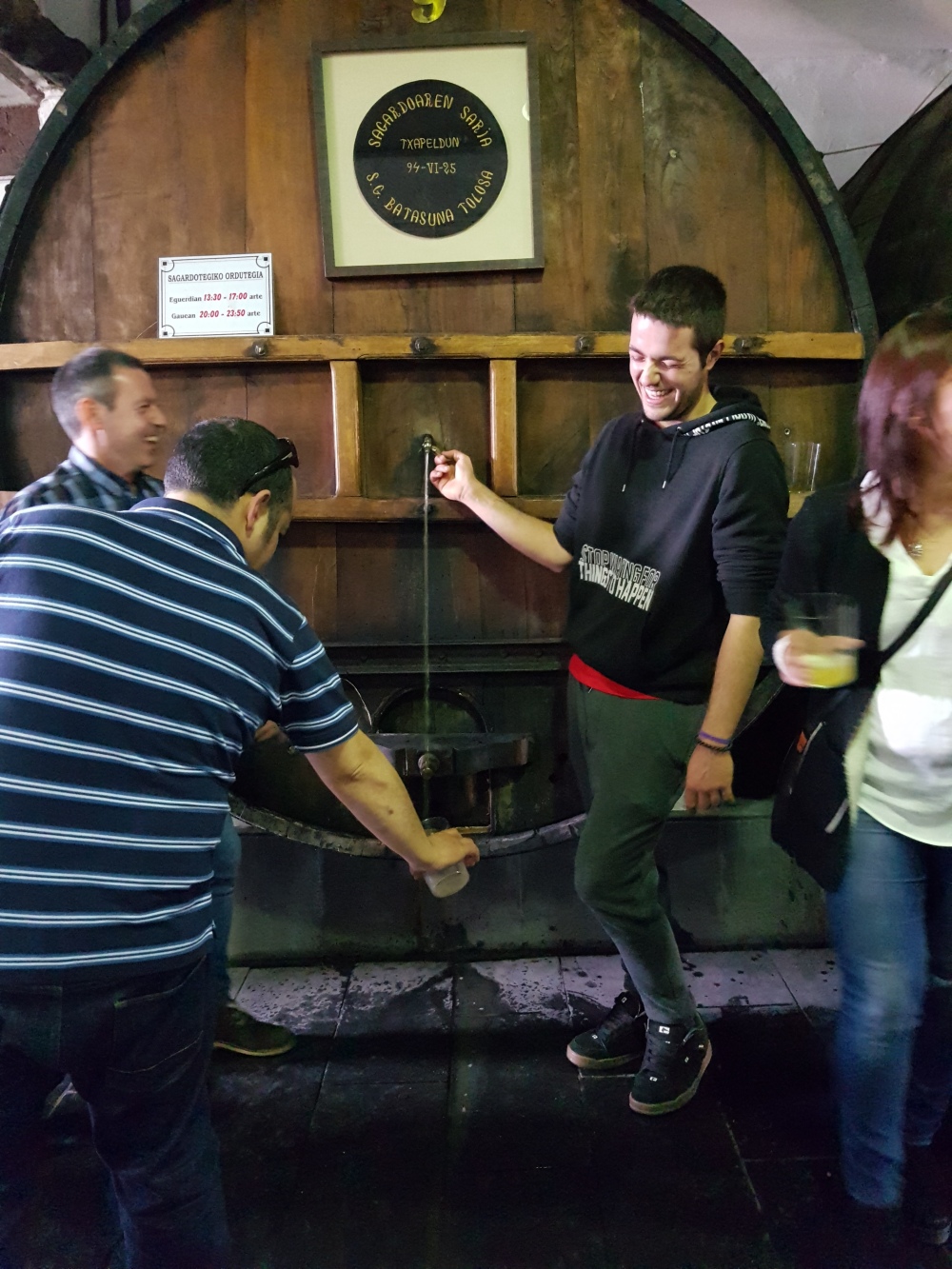
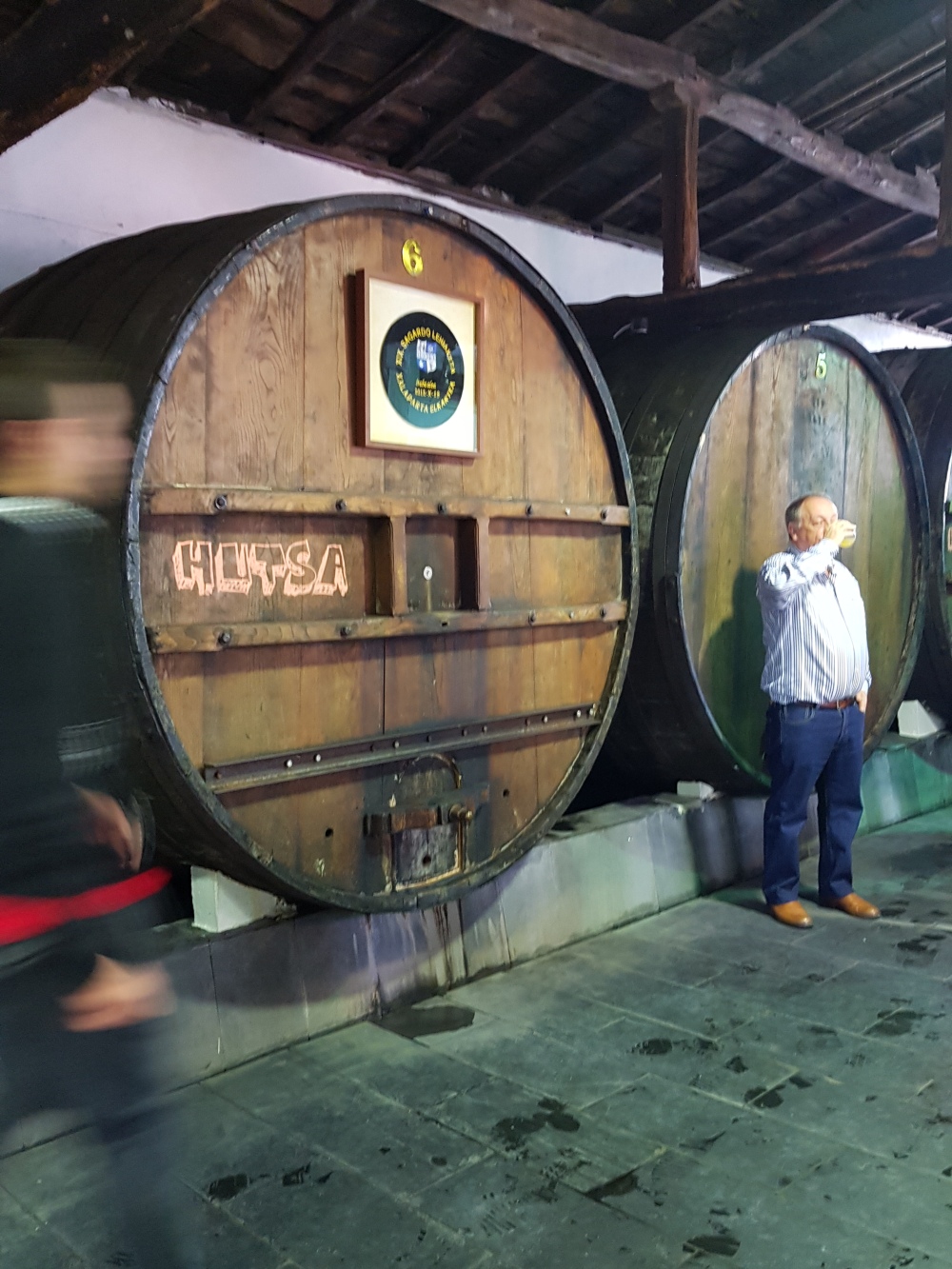
These massive oak structures are at the heart of the Basque cider houses, or Sagardotegi, admittedly lesser-known tourist attractions in the Basque country. (Certainly, they’re quite a detour from the mainstream pintxo bar-hopping itinerary in San Sebastián!)
Sagardotegi season runs every year from January to April, right after apples are harvested in the Fall and stored in giant wooden barrels for fermentation. After April, the cider is then bottled for commercial distribution.
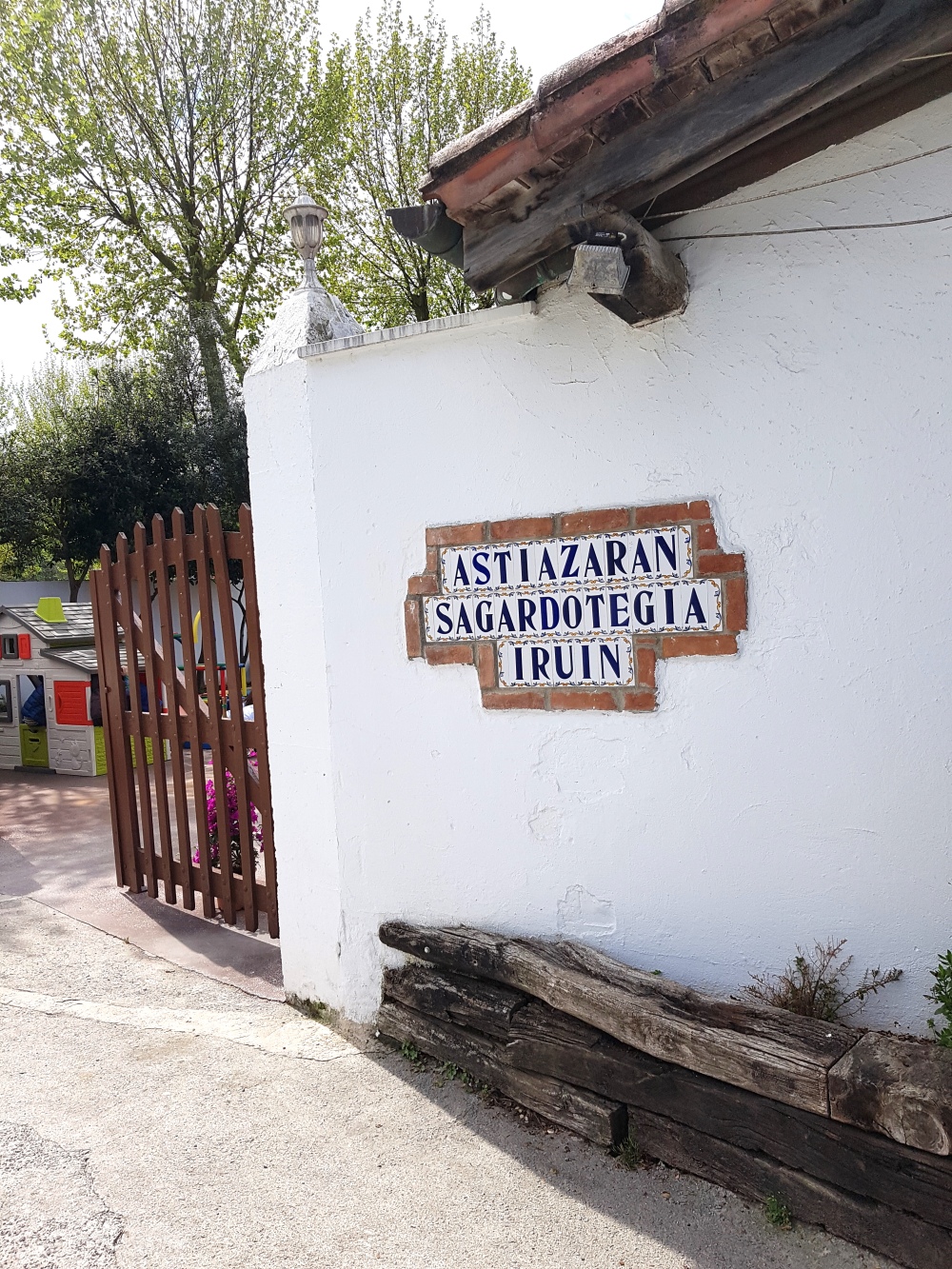
So this is where me and my three friends Klara, Tia and Addaia spent a Saturday afternoon in April, catching the tail end of the cider season, and far away from pretty pintxo land. Instead, we tore at slabs of steak bigger than my torso, cracked walnuts with our bare hands like rogue pirates, and learned about how drinking cider helped the Basque whalers survive their extremely arduous oceanic voyages.
Traditionally, daily cider rations were part of the maritime contracts of Basque sailors.
“Cider was what prevented the Basque whalers from getting scurvy, because it contained antioxidants,” explained Addaia, my Basque friend and San Sebastían local. (Whereas the vast majority of the non-cider drinking seafarers – more than two million of them – died from scurvy during the Age of Exploration.)
A tall young Basque in charge of opening the spouts of the huge barrels motioned us to come closer with our glasses. As he opened the spout, a powerful stream of cider gushed forth and soaked my jeans.
It was time to learn how to drink cider the Basque way. With our glasses, we had to aim for the stream, tilting our glasses at just the right angle to get the cider to bubble, and then bring them up towards the spout. It was awkward at first (I gave myself a facial of fermented apple juice at the first try) but after a few more attempts, we cider house virgins got the hang of it and soon felt like pros.
Oh, and if you want to go for another round but still had some cider in your glass, it is totally okay to just pour it on the floor. Cider house rulz!!
Badass Basque-ness
The best part of the cider tasting is the traditional meal that goes with it. The menu del día (set menu) doesn’t change, and is also partly based on the traditional fare of Basque sailors –
Tortilla de patata con bacalao (cod omelette):
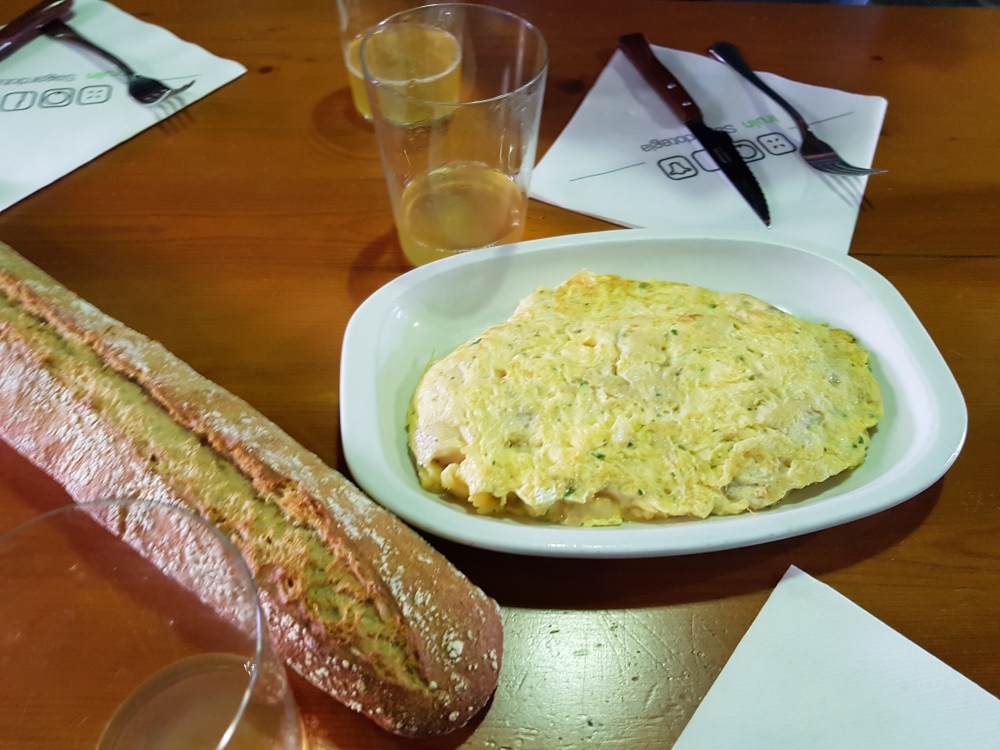
Sautéed codfish and green peppers:
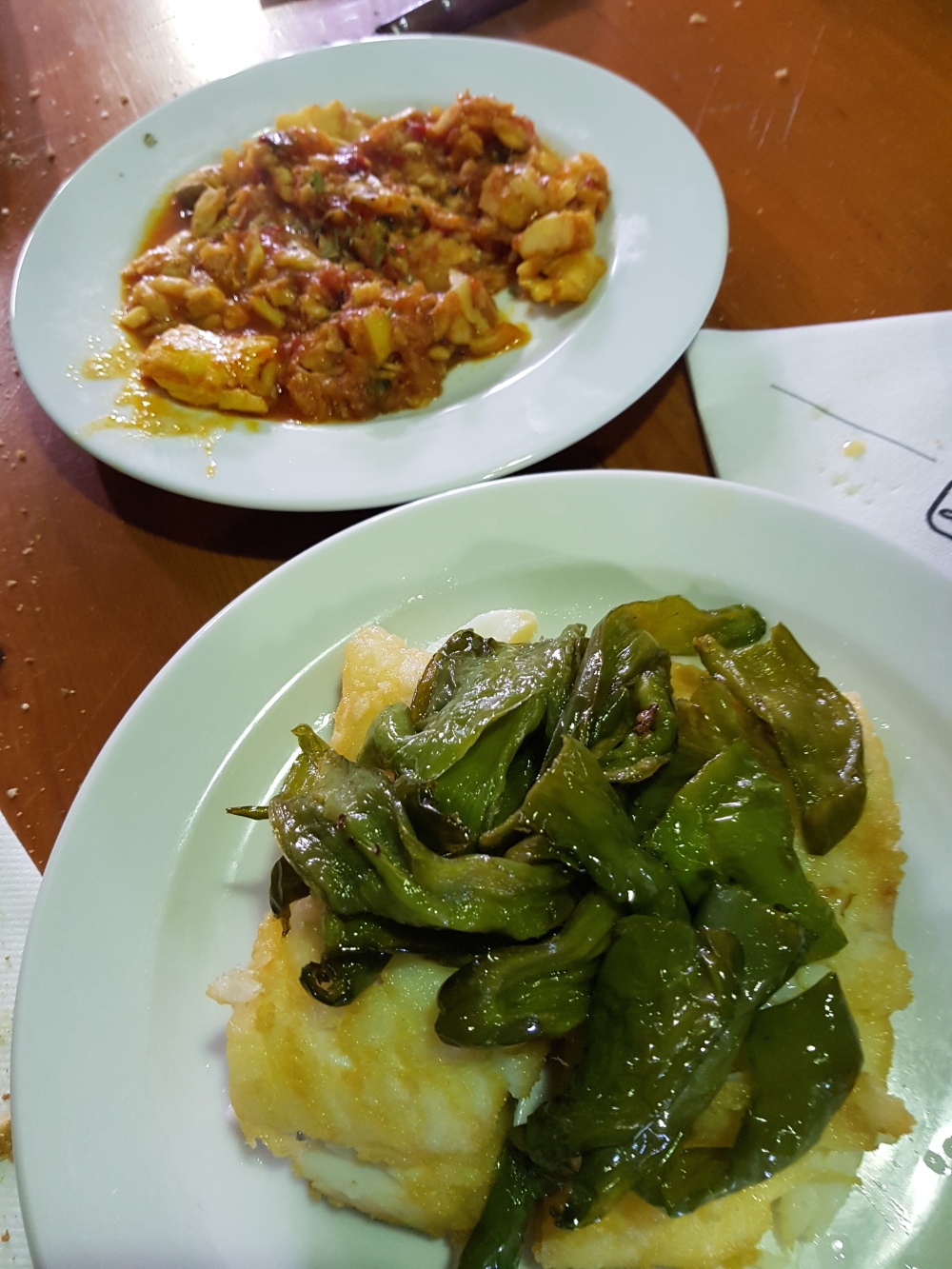
And then THIS otherworldly piece of meat:
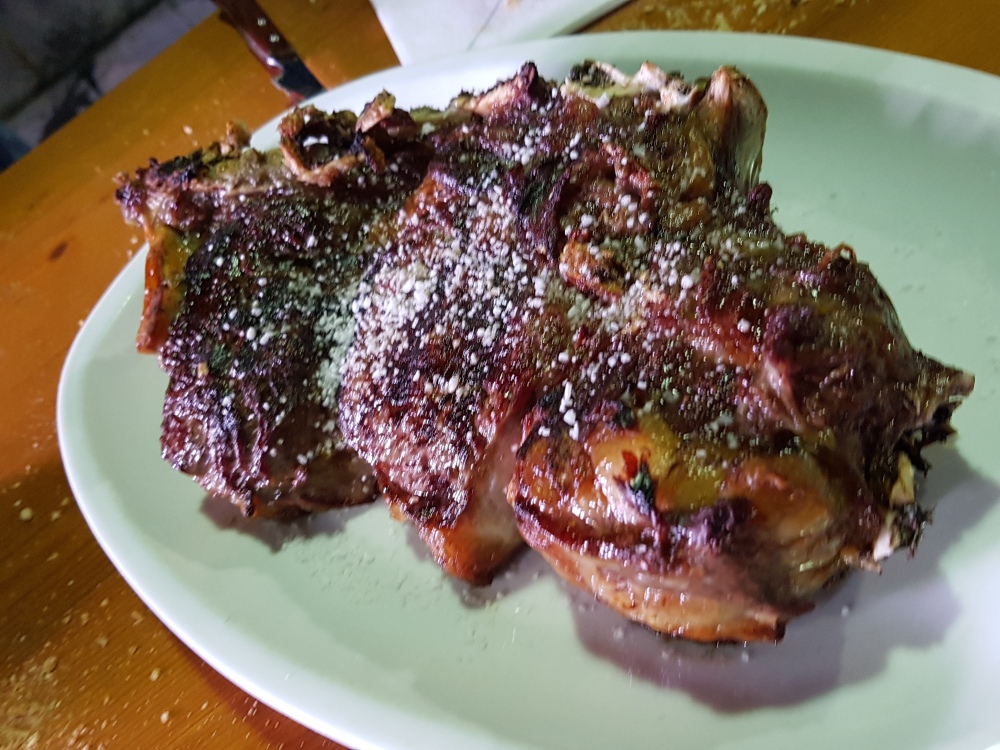
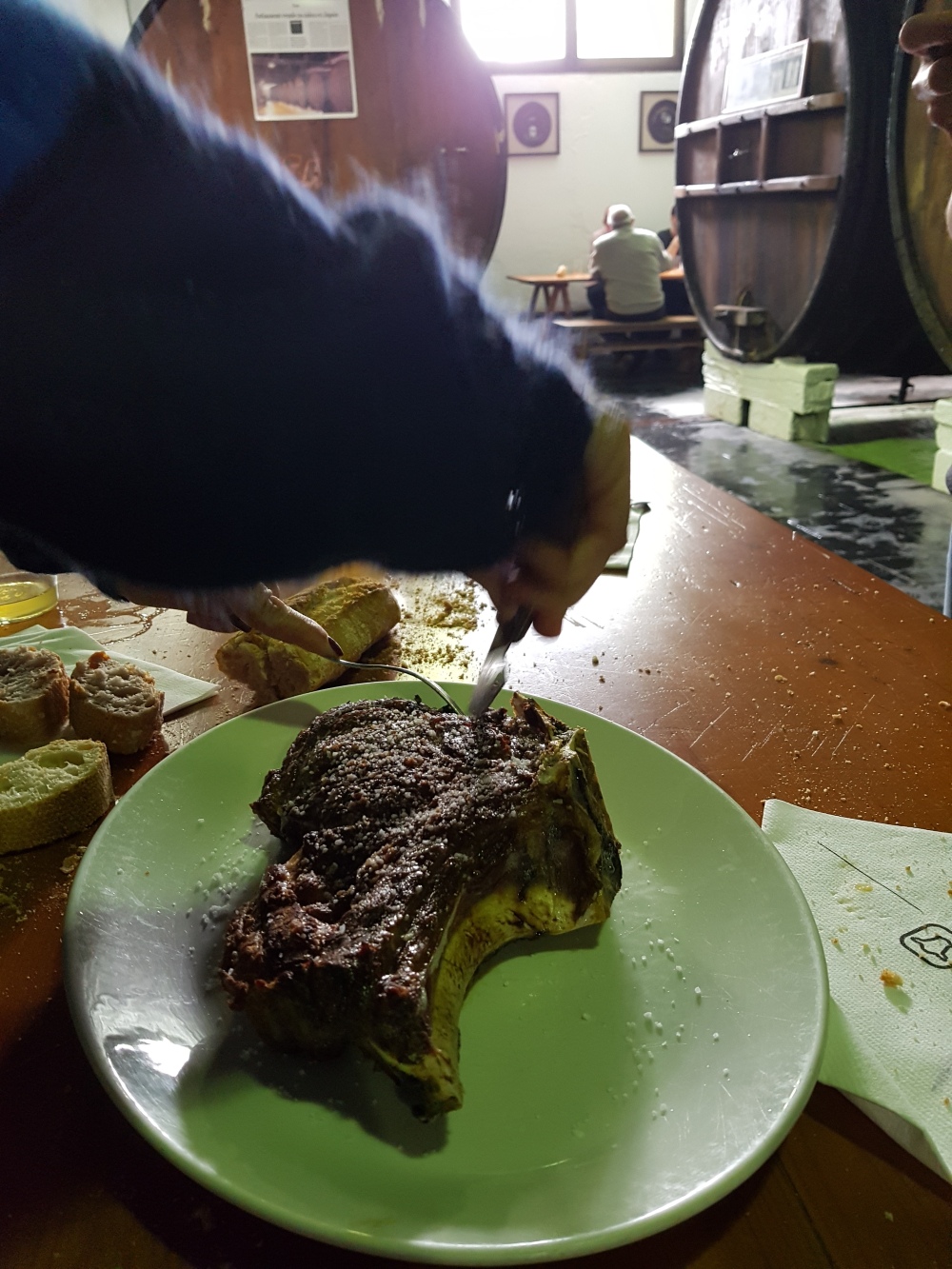
Finally, for dessert, it’s cheese, membrillo (quince) and walnuts. But with a twist…
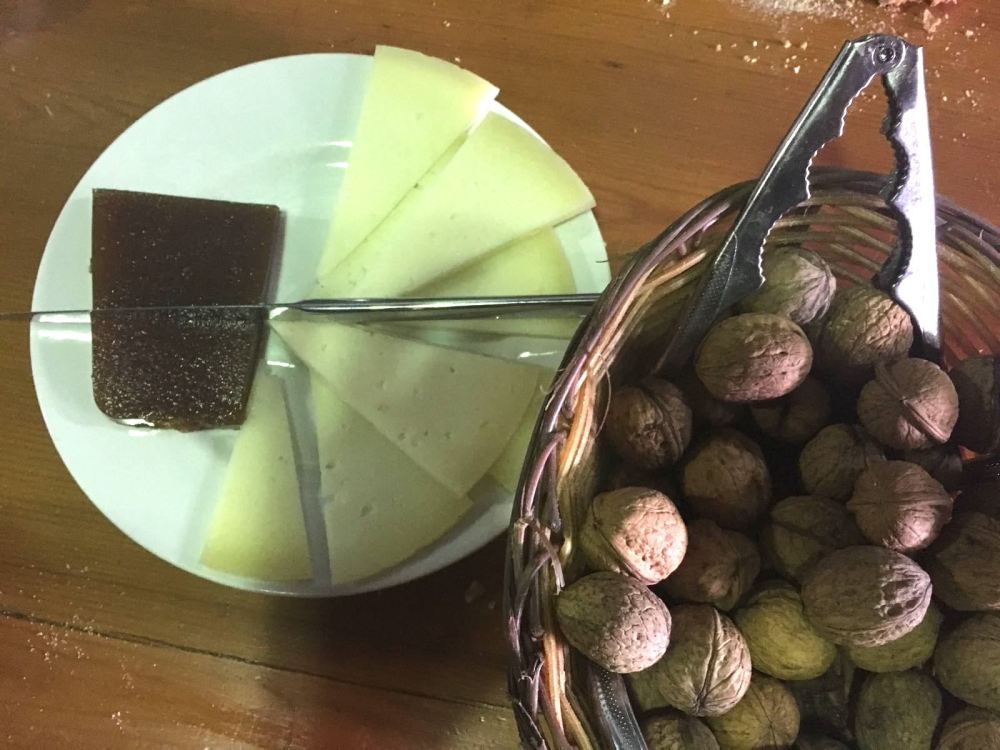
And here’s why – as Tia and I reached out for the nutcracker to open the walnuts, Addaia stopped us in horror, as if we were both grabbing chainsaws.
“Nutcrackers are for wimps, you crack walnuts with your hands,” said Addaia, as she grabbed two walnuts and proceeded to crush them in her palms. (It was around this point that I had concluded that all Basques are badass mo’fos.)
We did learn how to crack dem walnuts ourselves, thus earning us our own badass mo’fo badges as well:
Speaking of the indefatigable bad-assness of Basques, I almost failed to mention that we ate our 3 hour lunch in long wooden tables…whilst standing up.
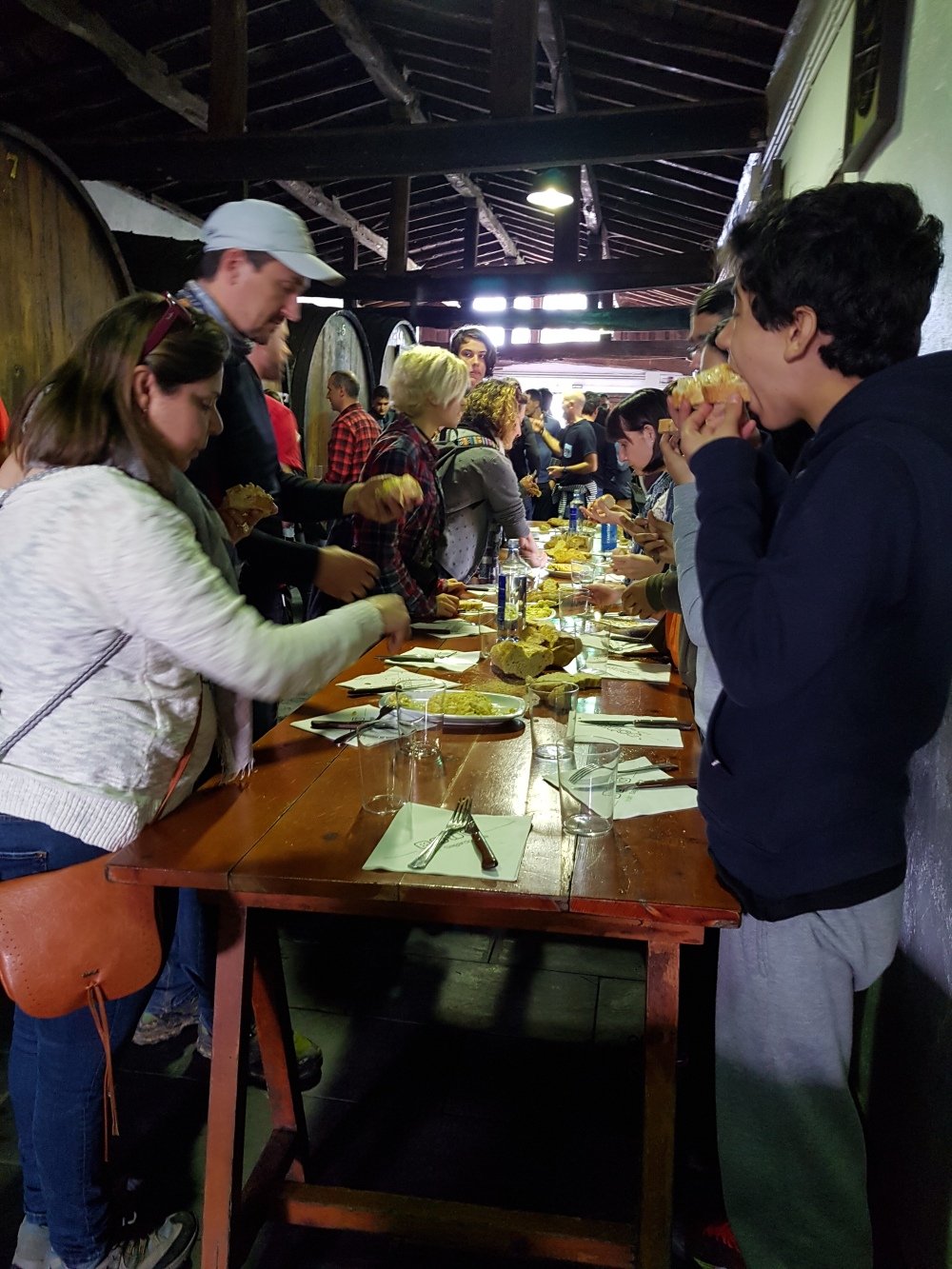
According to Gorka, another Basque friend, this longtime Basque tradition of eating while standing around long tables stems from the Basques’ penchant for mingling and talking to everyone around the table during their meal. With this set up, they can easily leave their spot and catch up on life with someone at the other end of the table.
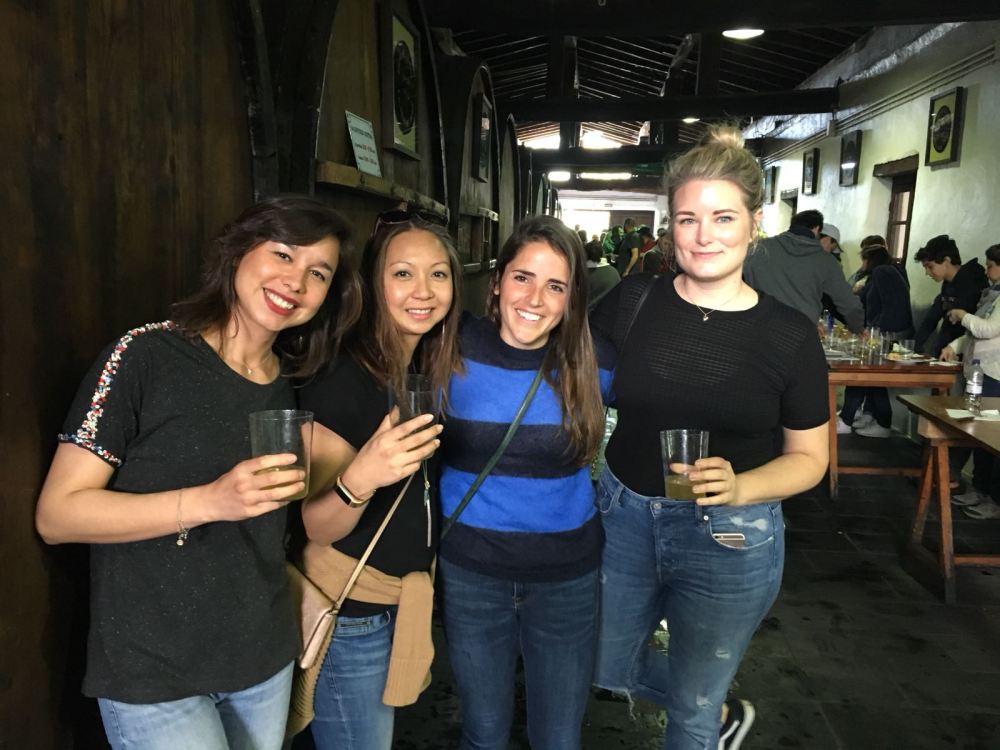
Cider, cider burning bright
The cider man calls out for another round of cider stream catching and this time we confidently lined up for our, um, tenth cider perhaps? and clinked our glasses like swarthy sailors, fantasizing about our next global conquests.
And that’s how we like ‘dem fermented apples.
*************
Interested in further exploring Basque seafaring traditions? Check out Basque Whalers , an expedition where you can trace the oceanic routes of ancient Basque sailors.
And here is the fascinating book based on Antonio Pigafetta’s chronicles of Magellan’s attempted voyage around the world, which was completed by the Basque Elcano: “Over the Edge of the World: Magellan’s Terrifying Circumnavigation of the Globe”.


Great post! I’ve only ever visited San Sebastian and Bilbao, but I’ve always wanted to go back to check out the countryside – especially for the cider houses! Hopefully I’ll make it back to northern Spain soon 🙂
LikeLike
Thank you for commenting Erica! And yes it was such a different and memorable bonding experience, I want to go back next year when the season starts again in January 🙂
LikeLiked by 1 person